Count of the Empire
Pronunciation:
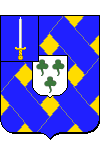
Emmanuel de Grouchy was born on October 23, 1766 at the family castle of Villette in Condécourt, near Paris.
A true aristocrat (he came from one of the oldest Norman families of the noblesse d'épée), the son of a cavalry officer and a graduate of military schools, but also brother-in-law of the philosopher Nicolas de Condorcet and close to Pierre Jean Georges Cabanis (who also became his brother-in-law), he enthusiastically embraced the Revolution, abandoning his compromising rank of lieutenant-colonel in the king's bodyguard to pursue a career in the cavalry.
He was promoted to colonel in 1792 and took part as marshal de camp in the conquest of Savoy.
In May 1793, he defended Nantes against the Vendéens, but was expelled from the army in October as a ci-devant noble.
Grouchy was reinstated after the 9th of Thermidor, promoted to major general in 1795, and became Lazare Hoche's chief of staff in the Army of the West. In this capacity, he was present at Quiberon when the joint forces of emigrants from England and local Chouans were crushed, then took part in the Irish expedition, where, separated from his commander by the storm, he did not dare take the decision to land the troops.
Neglected by Napoleon Bonaparte when it came to setting up the staff for the Egypt expedition, he moved on to the Army of Italy under general Barthélemy Joubert. There, after forcing King Charles-Emmanuel IV of Sardinia to flee his continental states (November 1798), he received fourteen wounds at Novi (August 15, 1799) and fell into Austrian hands.
His captivity lasted a year, until he was exchanged with an English general. In the meantime, he sent a letter of protest against the coup d'état of 18 Brumaire to the Directoire, which arrived on the First Consul's desk.
Napoleon Bonaparte did not hold this against him, and gave him command of the Grisons army, with which he drove the Austrians out of the Engadine (south-eastern Switzerland). He was then assigned to the Army of the Rhine, and took part in the Battle of Hohenlinden. This time, his links with General Jean Victor Marie Moreau aroused suspicion and deprived him of any major command until 1805.
That year, he invested Ulm and then operated in the Tyrol.
In 1806, he pursued the remnants of the Prussian army after Jena, securing the surrender of General Frédéric-Louis de Hohenlohe-Ingelfingen.
In 1807, he was at Eylau and Friedland, where he was wounded.
Appointed governor of Madrid in 1808, Grouchy suppressed the May 2 insurrection under the orders of Joachim Murat.
In 1809, Grouchy, still a recent Count of the Empire, decided victory at the Battle of Raab (June 14), then played a brilliant role in the Battle of Wagram (July 6). Appointed colonel-general of the Guard's horse chasseurs, he took his place among the Empire's great officers.
During the Russian campaign, Grouchy commanded first one of the three cavalry corps, then the Sacred Squadron, which protected the Emperor during the retreat. He was partly responsible for the success of Borodino (September 7, 1812), a battle in which he was wounded.
He did not fight in 1813, Napoleon 1st having refused him the infantry command he had applied for.
But he returned to service for the campaign of Northeast France of 1814, commanding what remained of the cavalry and serving at Brienne (January 29), La Rothière (February 1), Montmirail (February 11) and Craonne (March 7), where he was seriously wounded.
Stripped of his rank by Louis XVIII, he immediately rallied to Napoleon on his return from Elba. He was given command of the Armée du Midi, with which he defeated the royalist troops of the Duc d'Angoulème, and captured this prince, son of the Comte d'Artois and nephew of the king.
He was rewarded with the marshal's baton (April 15, 1815), the final one awarded by Napoleon I.
Commander of the cavalry reserve during the Belgian campaign, his military reputation was tarnished at Waterloo by his lack of energy and decisiveness. By persisting in pursuing the elusive Prussians, as ordered, rather than coming to the rescue of the rest of the army at the sound of cannon fire, he incurred responsibility for the defeat. In the days that followed, however, he pulled off a fine retreat.
Proscribed by the decree of July 24, 1815 (the same decree that sent Marshal Ney to the execution post), he took refuge in Philadelphia, where he remained for five years. Finally, in a decree issued in November 1819, the King allowed him to return to France and restored his titles, ranks and honors on March 19, 1815 - which deprived him of his marshal rank.
He had to wait until Louis-Philippe and November 1831 to regain it.
Emmanuel de Grouchy, in his eighties, died in Saint-Etienne on May 29, 1847. He is buried in the 57th division of the Père-Lachaise cemetery in Paris.
"Emmanuel de Grouchy" by Georges Rouget (Paris 1783 - Paris 1869).
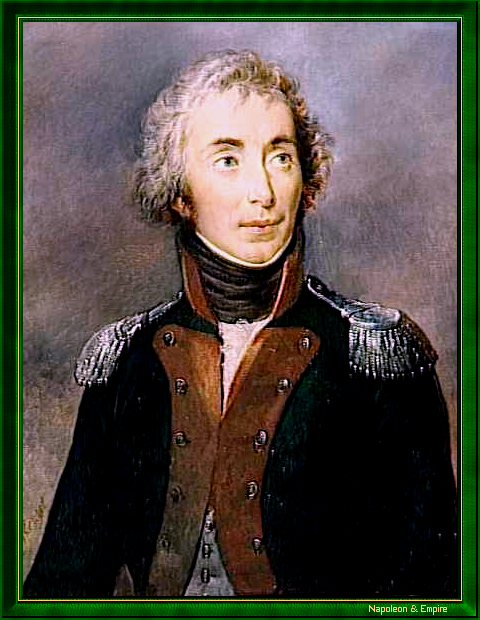
Grouchy's name is inscribed on the 4th column (north pillar) of the Arc de Triomphe de l'Étoile.
Freemasonry: Emmanuel de Grouchy was a member of the lodges "L'Héroïsme" in Beauvais (where he was initiated in 1787) and "La Candeur" in Strasbourg.Detailed military career
established by Mr. Eric Le Maître, put online with his kind permission.Wounded in action
Wounded at the Battle of Eylau, February 8, 1807.
Biscaine wound to the chest at Borodino, September 7, 1812.
Wounded at the capture of Troyes, February 23, 1814.
Shot in the thigh at Craonne, March 7, 1814.
Captivity
Captured at Pasturana (Italy), on August 15, 1799. He was exchanged after a year spent in captivity.First engagement
Second lieutenant in the Besançon artillery regiment, August 24, 1781.Career development
Second lieutenant, August 24, 1781.
Captain, October 28, 1784.
Lieutenant-colonel, December 25, 1786, but discharged January 27, 1787.
Lieutenant-colonel again, December 18, 1791.
Colonel, February 1, 1792.
Field Marshal, September 7, 1792.
Major General, April 23, 1795.
Marshal of the Empire, April 15, 1815.
Service record
With the Besançon artillery regiment, August 24, 1781.
Royal Foreign Cavalry Regiment, October 28, 1784.
Second lieutenant in the king's bodyguard, Scottish company, December 25, 1786.
Discharged January 27, 1787.
With the 12th régiment de chasseurs à cheval, December 18, 1791.
2nd regiment of dragoons, colonel, February 1, 1792.
6th regiment of hussars, July 8, 1792.
To the Army of the Center and then the Alps, September 1792.
With the Brest Coast Army, May 15, 1793.
Suspended as a nobleman, September 30, 1793.
Excluded from the army for this reason, October 8, 1793.
Reinstated in his rank in the Army of the West, November 29, 1794.
Chief of staff to Hoche in the Army of the West, 1795-1796.
Commander-in-chief of the Brest coastal army in place of Pérignon, November 26, 1795.
Appointed Chief of Staff of the Armée du Nord, March 25, 1796.
Commander of the 12th military division at La Rochelle, from September 2, 1796 to March 17, 1798.
Second-in-command of the Irish expedition and Hoche's chief of staff, November 1, 1796.
Acting commander of the Irish expedition, from December 24, 1796 to January 18, 1797.
Chief of staff of the Army of the North, March 17, 1798.
Chief of Staff of the Army of Mainz, July 11, 1798.
Commander of the Piedmont division, December 11, 1798.
Chief of staff to Moreau in Italy, May 1799.
Commands a division at Novi, August 15, 1799.
Commanded the 4th division of the 2nd reserve army, July 31, 1800.
Commanded the 1st division of the Corps du Centre in the Army of Germany, November 12, 1800.
In the Midi observation corps, July 1801.
Inspector General of Cavalry, September 23, 1801.
Bayonne camp cavalry commander, August 30, 1803.
At Brest camp, 1804.
Commander of the 2nd division of the Dutch occupation corps, March 6, 1804.
Commanded the 2nd division of the 2nd corps of the Grande Armée, August 30, 1805.
Replaced due to illness, April 27, 1806.
Commander of the 2nd dragoon division in the cavalry reserve, September 20, 1806.
Commanded the 2nd dragoon division of the 2nd corps, December 13, 1806.
Back to the cavalry reserve, January 12, 1807.
Commanded the cavalry of the corps d'observation des côtes de l'Océan, November 5, 1807.
Commanded the cavalry of the Spanish army, between February and October 1808.
Suppressed the Madrid insurrection on May 2, 1808.
Employed in the Army of Italy, November 9, 1808.
Commanded the 1st dragoon division of the Army of Italy, April 1, 1809.
Colonel general of chasseurs in place of Marmont, July 31, 1809.
Commanded the light cavalry division of the Italian observation corps, from April 20, 1811 to January 10, 1812.
Commanded the 3rd cavalry reserve corps of the Grande Armée, January 28, 1812.
Served in Russia, commanding the Sacred Squadron during the retreat in November 1812.
Authorized to return to France on January 19, 1813.
Placed on sick leave on April 1, 1813.
Commander-in-Chief of the Grande Armée cavalry, December 15, 1813.
Inspector general of chasseurs and chevau-légers lancers, July 19, 1814.
Commanded the Armée du Midi against the Duc d'Angoulême, March 31, 1815; took the Comte d'Angoulême prisoner.
Commanded the 7th Corps and the Army of the Alps, from April 11 to 26, 1815.
Peer of France during the Hundred Days, June 2, 1815.
Commander of the cavalry reserve in the Belgian army, June 3, 1815.
Commander of the entire Armée du Nord, June 26, 1815.
Proscribed at the Second Restoration, July 24, 1815.
Embarks at Guernsey and takes refuge in Philadelphia.
Amnestied and reinstated as lieutenant-general, November 24, 1819.
Returned to France on June 20, 1820.
Retired on December 1, 1824.
Recognized as Marshal of France, November 19, 1831.
Peer of France, October 11, 1832.
Other portraits
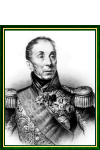
Enlarge
"Emmanuel de Grouchy", Nineteenth century etching.
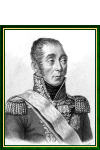
Enlarge
"Emmanuel de Grouchy", drawing by Charles-Aimé Forestier (1789-?).
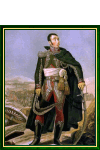
Enlarge
"Emmanuel de Grouchy". Nineteenth century French school.
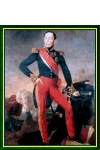
Enlarge
"Marshal Grouchy", by Jean Sébastien Rouillard (Paris 1789 - Paris 1852).